The top of the Apache’s rotor mast has changed dramatically over the years. At first, it was just that, a hub for the helicopter’s rotors, but over time, it became a key spot to install sensor and communications systems. The AH-64D Longbow famously included the AN/APG-78 mast-mounted radar, drastically changing the helicopter’s profile. Later on, the area became used as a place for a line-of-sight communications array. Now, the latest example of this practice consists of an all-new and very distinct apparatus that will allow the Apache Guardian to control unmanned aircraft and share data like never before.
A significant number of the U.S. Army’s AH-64E Apache Guardian attack helicopters are now flying with L3Harris’ Manned-Unmanned Teaming-Extended (MUMT-X). The new rotor mast extension and other hardware allow Apache pilots to take direct control of the sensors and flight paths of multiple RQ-7B Shadow V2 and MQ-1C Gray Eagle uncrewed aerial systems (UAS), as well as the latter’s weapons. In other words, Apache crews will be able to spot, evaluate, and kill targets from dozens of miles away, and do so even by controlling multiple drones at once. The system also facilitates the transfer of high-bandwidth live video feeds, and other forms of data, from said drones and Apaches to other nodes elsewhere, supporting multiple data connections simultaneously.
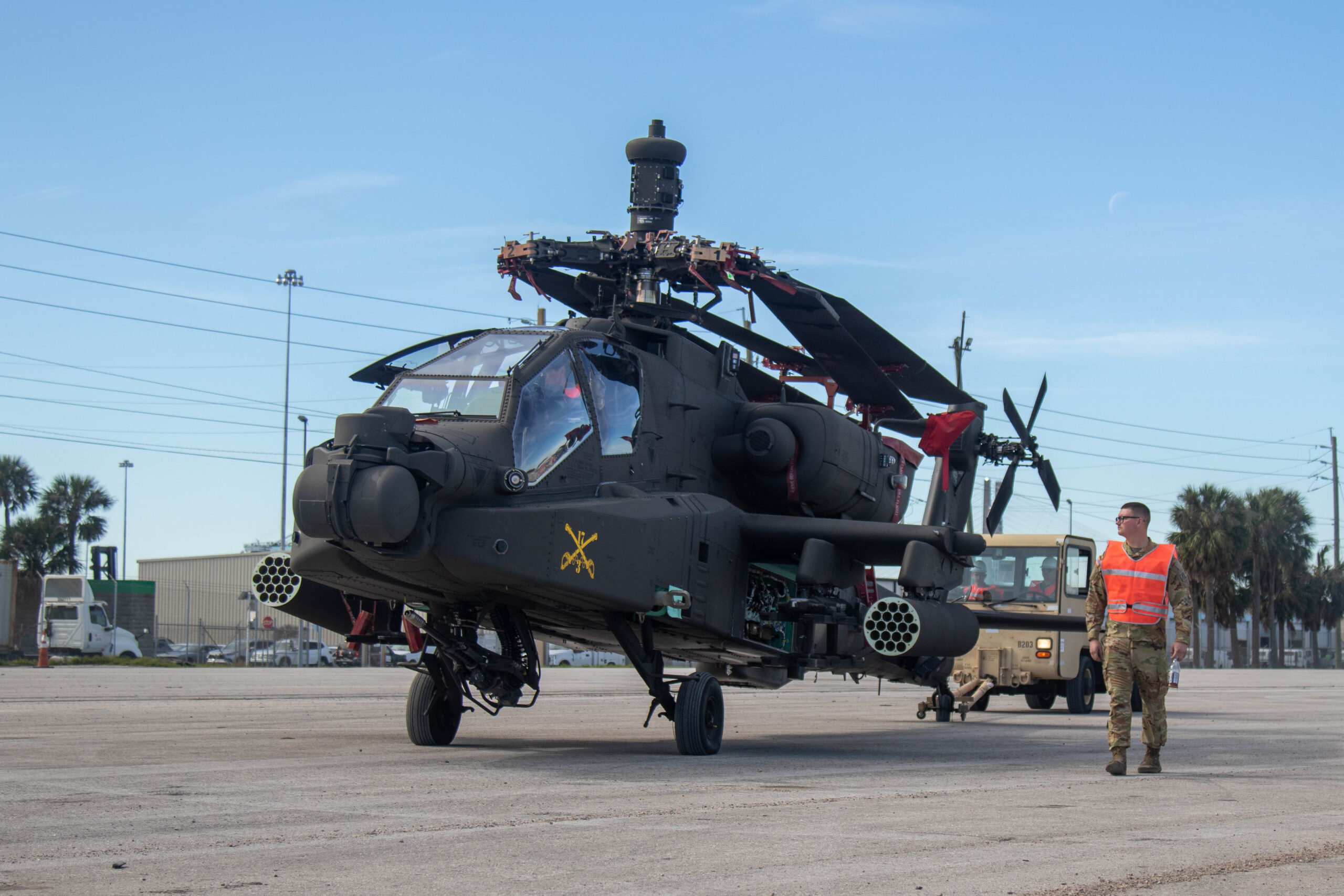

The rotor mast is part of a suite of improvements to the service’s AH-64E Apache Guardian fleet known as the Version 6 upgrade package. Earlier MUMT communications arrays that sat atop the mast were simpler installations with far less functionality. MUMT-X offers a major leap in capability and adaptability.

The incorporation of MUMT onto the Apache was a critical justification for getting rid of the OH-58D Kiowa Warrior fleet close to a decade ago, with the idea being that drones connected to AH-64s would take on the armed scout role, although not in a direct replacement manner.
A video showing the simpler MUMT system that predated the MUMT-X:

The intricate and tall rotor extension looks like the head of the IG-11 assassin droid from Star Wars, and it’s packed with lethality-enhancing capabilities. At the top is a directional antenna array that provides connectivity over extended ranges. It’s also likely to be far less susceptible to its emissions being detected and geolocated by enemy surveillance systems. It has additional frequency bands, as well, compared to its simpler and smaller and simpler predecessors. It operates in the Ku, C, L, and S bands.
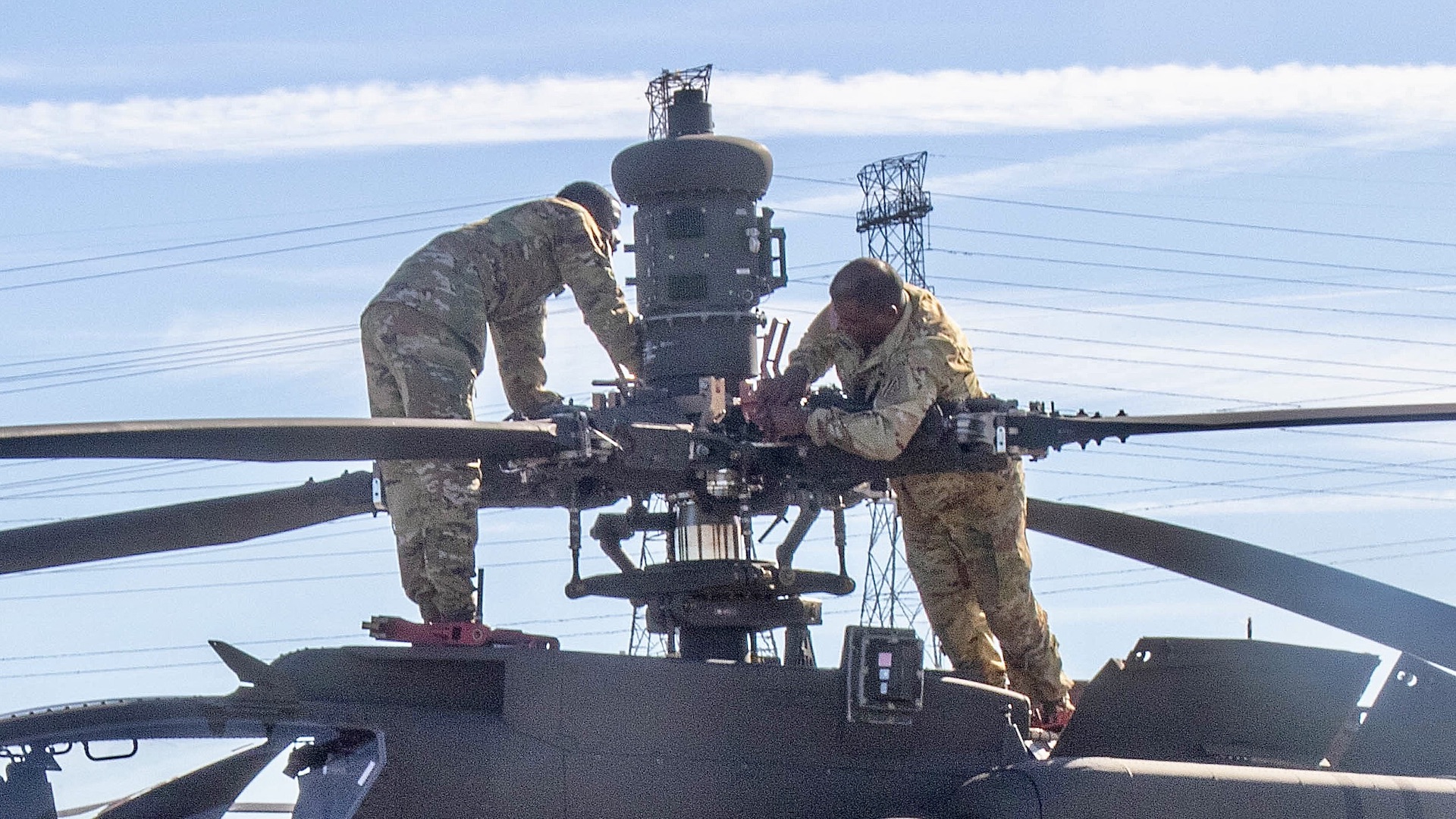
A bit of a mystery, at least to us at this time, regarding this system has to do with what appears to be the ability to have additional components attached to it. This modularity is intriguing, although it is not clear what it provides. The MUMT-X mast extension certainly looks interesting when configured with attachments though, which can be seen in the image of the Apache below. A front and rear module are clearly visible. This is not that rare of a configuration based on imagery in the DoD’s own publicly available image files.

The other major externally visible part of the system constitutes an air-air-ground relay. This comprises a Ku-band bicone antenna mounted on the belly of the helicopter and uses the ROVER 6i architecture. The relay allows high-bandwidth intelligence, surveillance, and reconnaissance (ISR) video feeds and other data obtained from uncrewed systems to be sent to the Apaches and then relayed directly to soldiers, command and control centers, as well as ships below. Video feeds and data from Apaches themselves can similarly be beamed to units on the ground or at sea for improved situational awareness. In this way, the Apaches can work as an airborne relay node, providing active networking within their line of sight. This can be especially useful in high terrain or over long distances that exceed line-of-sight at the surface.
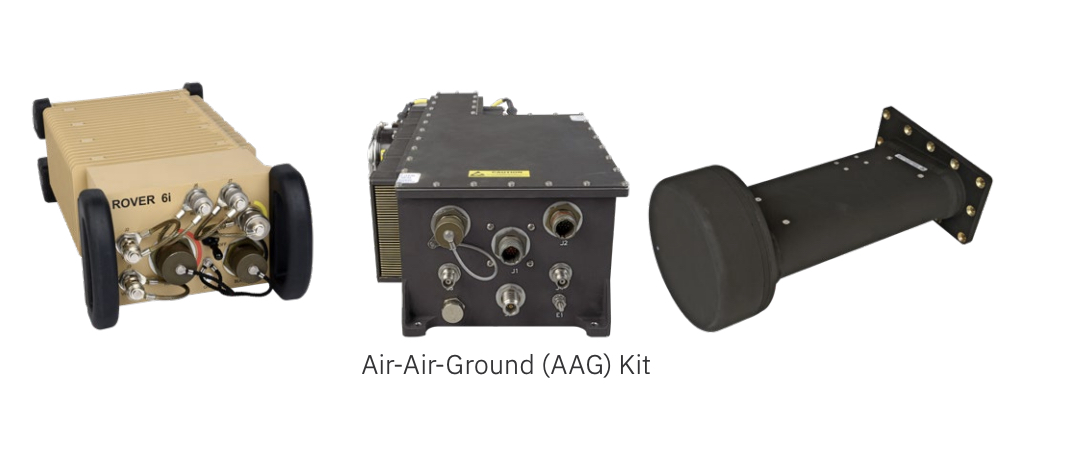
Having access to the new system brings an important set of advantages for the Army over pre-existing MUMT capabilities for the AH-64. In most previous configurations, Apache pilots could only receive video feeds and other data from UAVs, rather than pilot them and operate their payloads and weapons remotely. Connectivity was limited to one UAV at a time, as well. Some systems that saw limited deployment provided additional features with a higher level of interoperability and various tests were performed to expand the helicopter’s MUMT abilities with existing hardware, as well. For instance, Apache pilots successfully took control of RQ-7B sensors, using the helicopter’s existing AN/APG-78 Longbow radar coupled with MUMT software, at Dugway Proving Ground in 2020. This required software modifications and was more of a workaround than a dedicated, purpose-built capability. None of these systems really compared to the feature set of MUMT-X.

It should be noted that while AH-64E rotor mast radars can be swapped in and out in different configurations as required, there is currently no room to attach both the Longbow radar and the MUMT-X array on the Apache’s mast together.

When the program was spinning up back in the late 2010s, it was planned that 15 out of the 24 AH-64Es in a standard Apache battalion would get the MUMT-X capability, with the remaining retaining their mast-mounted fire control radars. All of them would get the AAG-X system. This makes sense as only one radar-equipped Apache in a formation is needed to provide targeting data to a flight of AH-64s, and a single MUMT-X capable Apache can provide not just long-range drone control, but also enhanced communications for the flight. Obviously adding a mix of radar and MUMT-X-equipped helicopters to any flight only increases capabilities and tactical options, as well as provides critical redundancies.
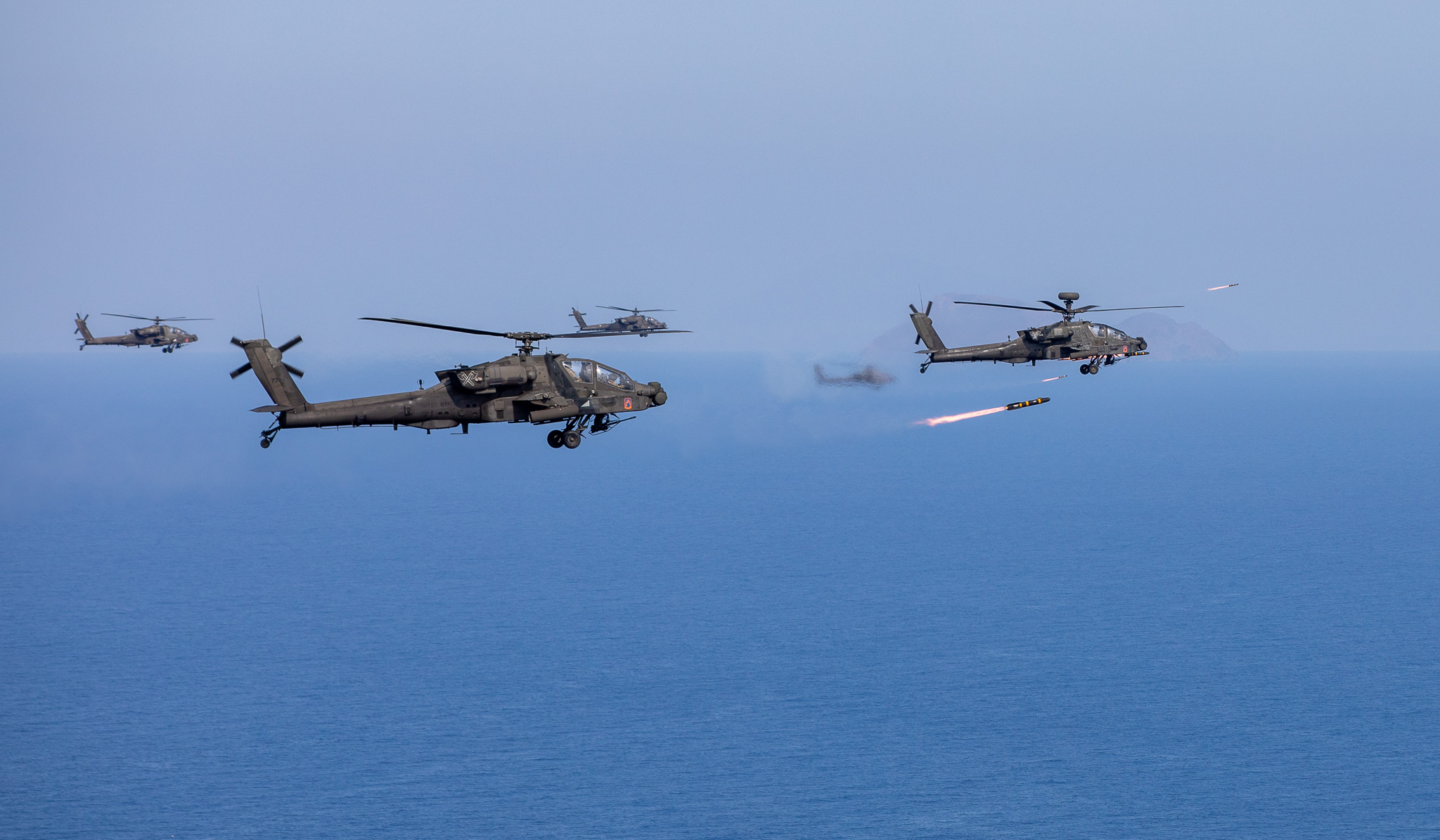
Coupling MUMT-X software — which L-3 Communications, the precursor to L3Harris, began work on in 2015 — with the new rotor mast will only extend the ranges at which existing UAVs can interact with Apaches. Tests have resulted in successful and stable communications links over dozens of miles.
Being able to send UAVs close to, or within, contested combat zones will no doubt help improve the survivability of Apaches and better protect the lives of Army Aviators. In these scenarios, work previously performed by crewed aircraft — including spotting targets and firing missiles at those targets, as well as collecting key ISR data — could be done by Apache crews from afar via UAVs. The service’s Future Unmanned Tactical Air System, the replacement for the RQ-7B, should also be remotely controllable via the MUMT-X system.
Beyond that, a single Apache equipped with MUMT-X can now surveil and engage targets over a much larger swathe of area at any given time than was ever possible without the MUMT-X. This is a massive force multiplier that puts the AH-64 in as much of a ‘quarterback’ position as one of a hunter-killer that is limited to its own sensors and weapons range.

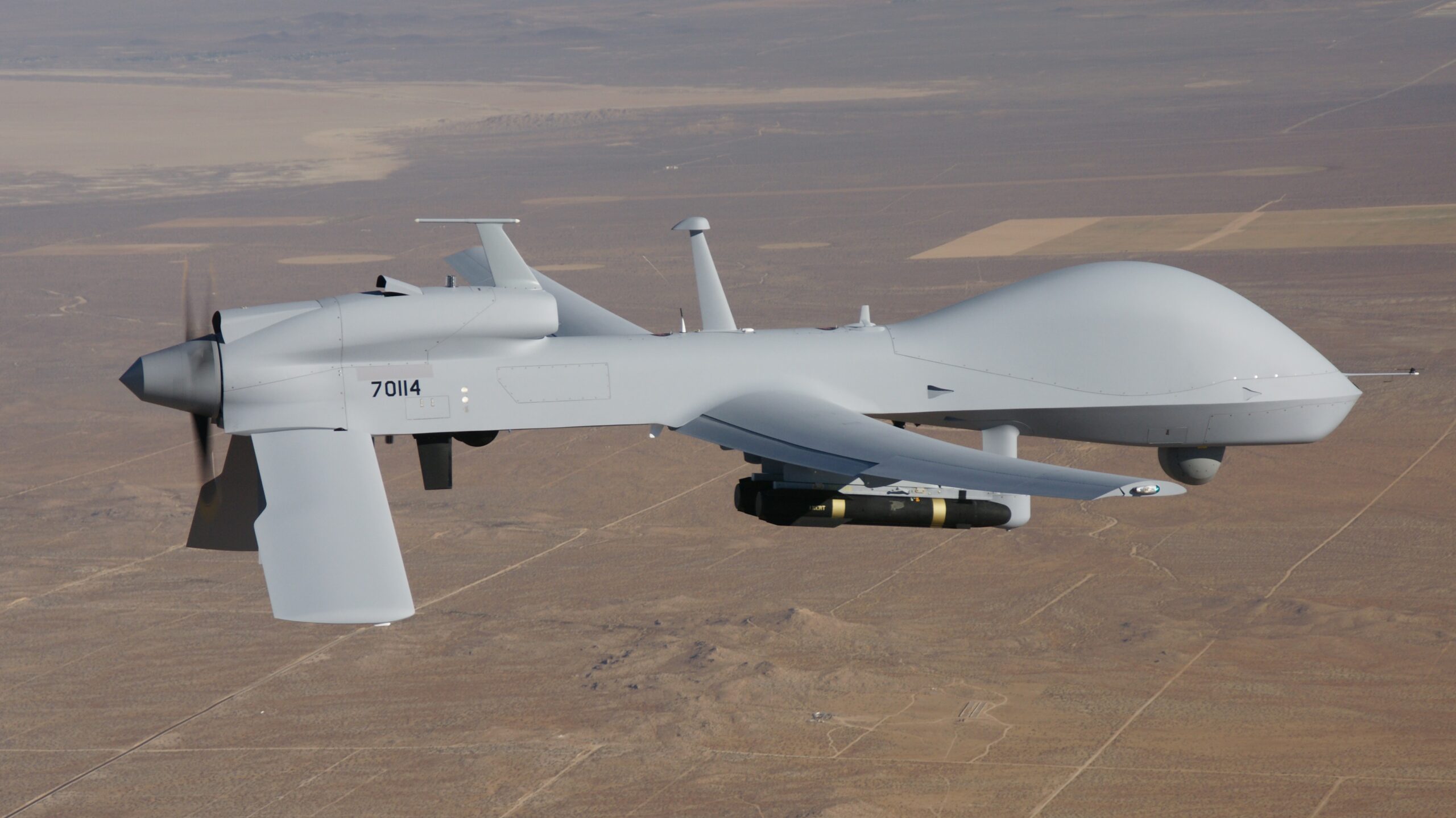
As briefly mentioned above, this new technology will also have cross-service benefits, underlining its utility in different operational environments. Previously, the service has teamed AH-64Es with MQ-1Cs to provide stand-off targeting support to artillery units ashore, as well as forming a communications relay for ships at sea. Being able to coordinate these types of engagements only adds to the Apache’s existing maritime capabilities.
That Apaches are flying with the latest crewed-uncrewed teaming hardware constitutes a significant step forward towards networking a more diverse range of uncrewed platforms to crewed aircraft, which the Army sees as critical to its operations in any future conflict. As we’ve outlined previously, the service is currently working to field a new family of air-launched multi-purpose uncrewed aircraft, known as “Air Launched Effects” (ALE). Here, electronic attackers, decoys, and suicide drones will be dispatched from Apaches and other platforms.

ALEs will find their way onto existing and future uncrewed systems like the MQ-1C, testing of which has already been conducted, as well as on the Apache itself. They will drastically expand Apache crews’ tactical options, situational awareness, and lethality — from providing key strike and surveillance capabilities in contested areas to harassing or misleading adversary forces. Stand-in jamming is also a key capability that will allow for Apaches and larger drones to survive in an increasingly contested battlespace. MUMT-X could provide an active networking solution and relay for control and data exchange when multiple ALEs are employed at once.
MUMT-X hardware is also one of several Apache upgrades that could help keep the aircraft operationally relevant in the coming decades. Being able to keep away from battlefield threats, and defend themselves more effectively, remains key. In January, for example, AH-64Es began receiving the Common Infrared Countermeasures self-protection system, or CIRCM, a directional infrared countermeasures package designed for defense against heat-seeking, short-range surface-to-air missiles. Other enhancements, like a large flat panel display in both cockpits, are also in the works.
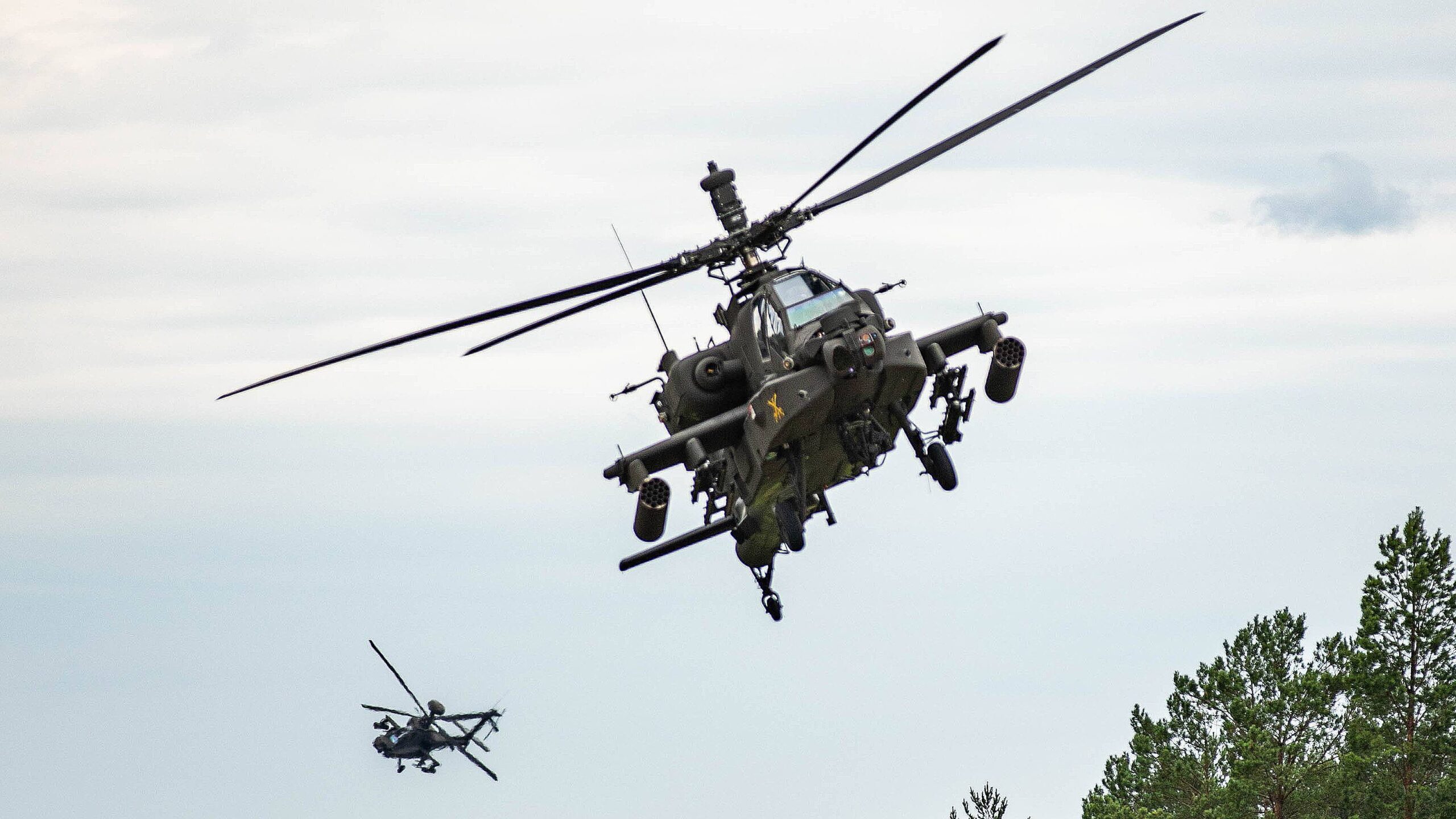
These sorts of upgrades strengthen the case for retaining a number of Apaches going forward by the aircraft’s supporters. Indeed, the Army is currently working through the process of selecting a replacement for large portions of its AH-64s and UH-60 Black Hawks, and possibly even CH-47 Chinooks, through its Future Vertical Lift initiative. A tilt-rotor design from Bell was chosen as the winner of the Future Long Range Assault Aircraft, or FLRAA, competition in December 2022 to replace a significant number of the Army’s Black Hawks. A protest by the Sikorsky-Boeing team, which offered the Defiant X as part of the competition, was subsequently shot down.
Moreover, many of the service’s AH-64s are also set to be replaced by the winner of the separate Future Attack Reconnaissance Aircraft (FARA) competition, intended to find a true successor to Bell’s OH-58 Kiowa scout helicopter. Sikorsky’s Raider X and Bell’s 360 Invictus are competing for the contract, while Boeing has pitched a major upgrade package for the Apache, including what appears to be a new mast-mounted radar sensor. However, the service intends to keep flying hundreds of existing Apaches over the next 25 to 30 years.
The MUMT-X system is clearly a centerpiece in ongoing Apache upgrades, as the Army looks to keep a number of the helicopters operationally relevant into the future. Above all else, it provides a critical networking node to enable a future of aerial warfare that will be dominated by unmanned systems.
And with that, the Apache’s iconic silhouette is modified once again. And in this case, the addition of its rotor hub extension is far more important than it may look at first glance.
Contact the author: tyler@thedrive.com and oliver@thewarzone.com
